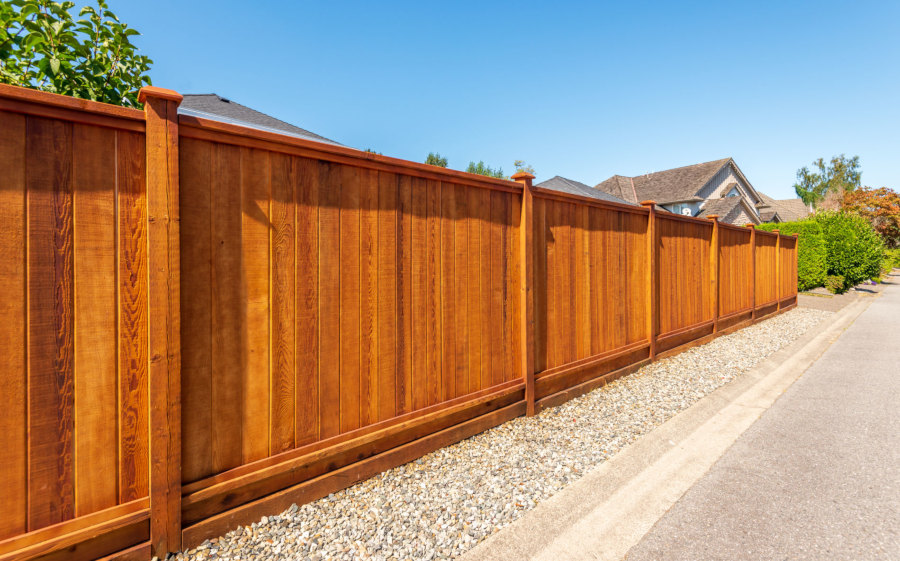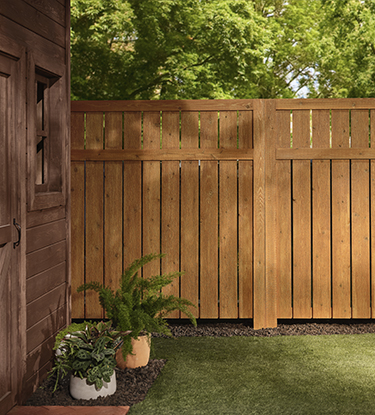Important Tips for Deck Staining Success
Attaining a faultlessly tarnished deck requires more than just a brush and a container of discolor. From selecting the appropriate type of discolor to mastering the art of application, each stage plays a critical duty in the final outcome.
Choosing the Right Discoloration
Selecting the proper discolor is paramount in achieving a durable and visually pleasing surface for your deck. fence cleaning near me. When choosing a stain for your deck, it is important to think about factors such as the timber kind, preferred shade, level of protection needed, and maintenance preferences
Firstly, think about the kind of timber your deck is made from, as different timber varieties might respond in different ways to particular sorts of spots. Woods like oak or mahogany might call for various spots compared to softwoods like ache or cedar. Comprehending the features of the wood will assist you choose a stain that passes through effectively and improves its all-natural beauty.
Following, think of the shade you want for your deck. Stains come in a range of hues, from natural tones that boost the timber's grain to even more nontransparent shades that offer better UV defense. Pick a shade that enhances your outside space and matches your aesthetic preferences.
In addition, examine the level of security the stain deals. Some spots give much more comprehensive security versus UV rays, moisture, and mildew, which can extend the life of your deck. Stabilizing defense with visual appeals is key to achieving a lasting and visually enticing coating.
Preparing the Deck Surface Area
To make sure a successful application of the chosen tarnish, complete prep work of the deck surface is important. Beginning by cleaning up the deck completely to remove dust, debris, and any type of previous finishings. Use a deck cleaner or timber brightener in addition to a stiff-bristled brush to scrub the surface area clean. Pay close focus to locations susceptible to mold and mildew and mold development. After cleansing, allow the deck to completely dry entirely prior to continuing.
Replace or repair these as needed to guarantee the architectural integrity of the deck. This action not just aids the discolor adhere much better but likewise enhances the total appearance of the deck.
Applying the Stain Properly

Begin by thoroughly mixing the stain to make sure an even consistency. Use a paint stirrer to mix the tarnish well, especially if it has been sitting for a while. When using the discolor, make use of a sprayer, roller, or paintbrush, depending upon the type of driveway gates discolor and the dimension of the deck. Job in manageable areas to protect against the stain from drying unevenly. Use the discolor in the instructions of the wood grain to make certain also protection and an expert finish.
Permit the initial coat to completely dry completely prior to determining if a second coat is needed. Comply with the manufacturer's guidelines relating to drying times and reapplication. Appropriate application of the stain is necessary for safeguarding your deck and improving its appearance for several years ahead.
Preserving Your Tainted Deck
After successfully using the tarnish to your deck, preserving its appearance and protective top qualities is important for lasting sturdiness and visual allure. Regular maintenance is crucial to maintaining the beauty and honesty of your stained deck. Dealing with concerns without delay can stop them from intensifying and extend the life of your discolored deck.

Troubleshooting Common Issues
Identifying and resolving common concerns that may develop with your tarnished deck is crucial for ensuring its durability and optimal efficiency. One common issue is flaking or peeling of the tarnish. This can occur as a result of bad adhesion brought on by insufficient surface area prep work or using the stain in negative climate condition. To remedy this, the affected locations require to be removed, sanded, and properly re-stained following maker guidelines.
An additional issue typically encountered is mold and mold growth on the deck surface. This can be connected to moisture retention, absence of sunshine, or incorrect ventilation. To tackle this issue, a comprehensive cleaning with a mold and mildew eliminator followed by correct drying and application of a mold-resistant stain is essential.
In addition, fading of the discolor shade over time is a widespread read more concern. UV exposure and rough climate can create staining. To address this, picking a top quality, UV-resistant discolor and using a fresh coat periodically can help maintain the deck's visual charm.

Conclusion
In verdict, effective deck staining needs selecting the appropriate discolor, effectively preparing the deck surface, applying the discolor correctly, and keeping the discolored deck. By complying with these important suggestions, you can attain a perfectly stained deck that enhances the general look of your exterior area. Find Out More Keep in mind to troubleshoot any usual issues that may arise throughout the discoloration procedure to make certain a aesthetically enticing and long-lasting outcome.
Attaining a perfectly tarnished deck requires even more than just a brush and a canister of tarnish.To make sure an effective application of the selected tarnish, detailed prep work of the deck surface area is essential. When applying the discolor, use a roller, paintbrush, or sprayer , depending on the kind of tarnish and the size of the deck.Recognizing and dealing with typical problems that may emerge with your stained deck is essential for ensuring its durability and ideal performance.In verdict, effective deck staining requires picking the right discolor, properly preparing the deck surface area, using the discolor properly, and keeping the tarnished deck.